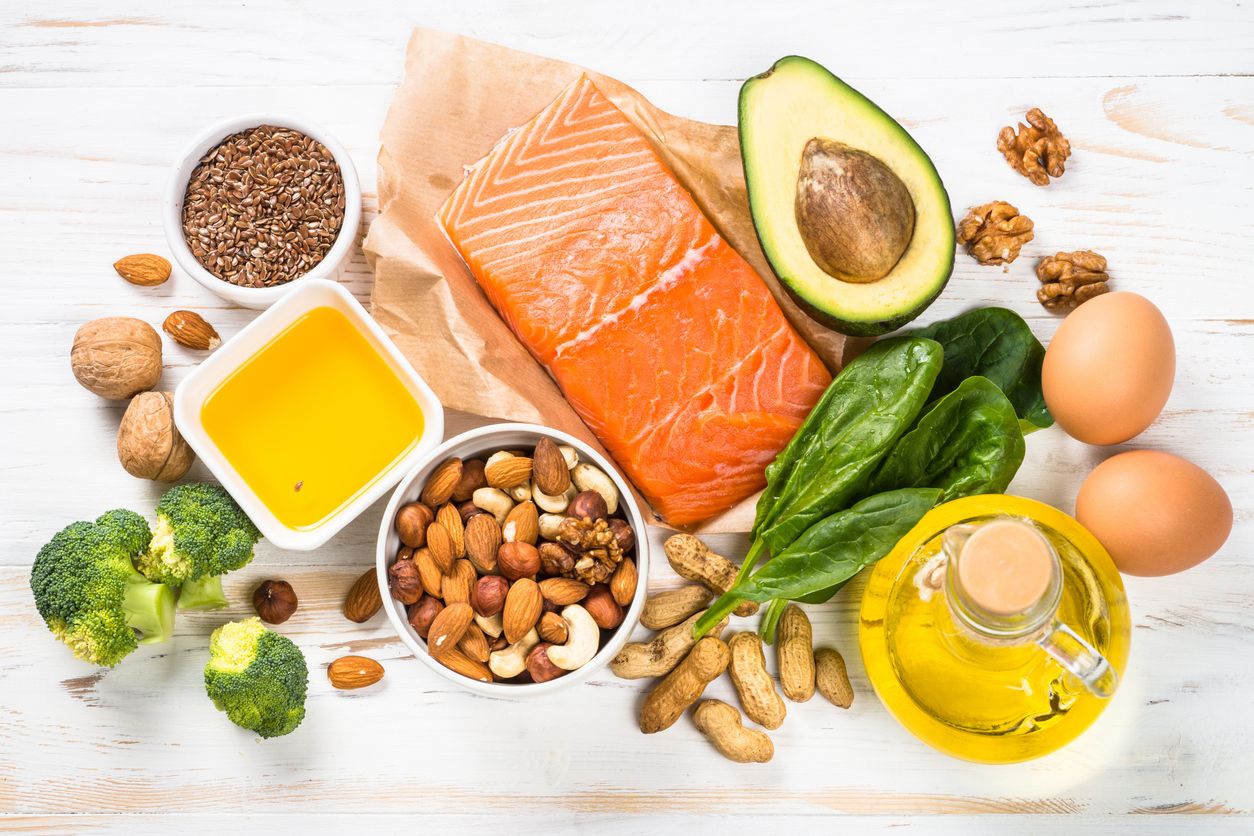- Home
- Trend
- Weight Loss Strategies
- Acne Tips
- Hair Health Information
- Blemish Removal Tips
- Acne Scar Removal Tips
- Muscle Building Techniques
- Intimate Care Tips
- Postpartum Intimate Care
- Eye Bags Wiki
- Tips for Face Slimming
- Secret of Permanent Hair Removal
- Breast Enlargement Tips
- Cure to Snoring
- Marionette Lines
- Skin-Tightening Secrets
Dieting is probably one of the most common approaches to weight loss—especially for shedding belly fat. Yet, when it comes to restrictive or intermittent fasting, the feedback is often negative: “The weight just comes back,” “Too many side effects and long-term issues,” or “You’re bound to fail.” It seems like the downsides outweigh the benefits, and success stories are few and far between. But is that really the case?
1. Dieting 101: Understanding the Basics

As one of the most commonly used weight loss strategies, dieting gets a lot of attention. But with all the criticism—easy rebound weight, unwanted side effects, and a reputation for failure—is dieting really doomed to fail?
To use dieting effectively for weight loss, we need to understand how it actually works. “Dieting” typically means reducing food intake to cut down on calories, ideally below what your body needs. This calorie deficit forces your body to tap into stored fat for energy, helping you lose weight and ideally, reduce belly fat. Of course, combining dieting with exercise is a better long-term strategy. Relying solely on dieting often leads to quick weight loss followed by rapid rebound.
Know Before You Start: Understanding Basal Metabolic Rate (BMR)
The key to dieting is controlling calorie intake. But how do you know how many calories your body needs just to function? That’s where your Basal Metabolic Rate (BMR) comes in.
BMR refers to the number of calories your body needs to maintain vital functions like breathing, heartbeat, and organ activity while at rest. It makes up the minimum energy requirement to keep you alive. On average, muscle accounts for 40% of your BMR, while the brain and organs account for the remaining 60%. For a healthy adult, BMR represents about 70% of your total daily energy needs.
Take, for example, a 35-year-old woman who weighs 45kg and is 158cm tall—her BMR would be roughly 1,200 calories. Including daily activities, she might need about 1,700 calories per day.
So in theory, if your calorie intake drops to around your BMR, your body will start breaking down fat—and even muscle—for energy, resulting in weight loss.
2. Popular Dieting Methods

So, if dieting can work in theory, what are some trending methods worth exploring?
免費體驗
S6 Body Sculpting Treatment
1 Minute Self-Registration
Date should not be before minimal date
Method 1: Low-Carb Dieting
One popular dieting approach is reducing your carbohydrate intake—especially refined carbs. This means cutting back on added sugars like white sugar, brown sugar, and syrups, as well as refined starches like white rice, white bread, and rice noodles. These refined carbs are stripped of nutrients and quickly absorbed, contributing to weight gain and metabolic issues.
The idea is to maintain minimal carb intake to keep the body functioning. If your carb stores are slightly low, the body turns to protein, and eventually fat, for fuel—helping burn off excess fat.
Method 2: Intermittent Fasting (IF)
Intermittent fasting has gained a lot of popularity recently. It limits eating to a specific window each day—typically 8 to 10 hours. During the fasting period, only zero-calorie drinks like water, tea, or black coffee are allowed.
The science behind it: when fasting, your body first uses up stored glucose and glycogen. Once those run out, it switches to burning fat for energy.
The 5:2 Diet
A more relaxed version of intermittent fasting is the 5:2 method. For five days a week, you eat normally. For the other two, you significantly reduce your intake to about 500–600 calories, focusing on low-calorie, high-satiety foods. Hydration is crucial—drink at least 2 liters of water daily.
Even on your “normal” eating days, it’s important not to binge. Opt for filling but healthy options like cabbage, cauliflower, sweet potatoes, lean meats (chicken breast, fish, eggs), and use light cooking methods like boiling or steaming.
Method 3: The Ketogenic (Keto) Diet
The Keto diet focuses on high fat, moderate protein, and very low carb intake. The typical ratio is 75% fat, 20% protein, and only 5% carbohydrates.
In Hong Kong, carb-heavy diets are the norm. Our bodies naturally burn carbs (glucose) for energy first. Keto flips that process, essentially “tricking” the body into a fasting state so it starts burning fat directly, producing ketones as a byproduct.
Common keto-friendly fats include coconut oil, nut oils, fatty meats (like pork belly, fish belly, chicken skin, and marbled beef). At the start, you may feel more tired due to water and electrolyte loss, but your body usually adapts.
Because of its highly imbalanced nutrient profile, keto isn’t recommended for more than two weeks at a time, and definitely not for frequent use.
4. Can You Really Lose Weight Through Dieting Alone?
Is it possible to successfully lose weight by dieting alone? In reality, relying solely on dieting to lose weight is an incredibly difficult task. If you want to lose weight through dieting without regaining the pounds later, it is essential to pair it with regular exercise. Try to develop a consistent workout routine—about 3 to 5 times a week, with each session lasting at least 30 minutes. These sessions should focus on aerobic activities, and you can rotate between different exercises, such as jogging one week, cycling the next, followed by swimming or playing sports.
Because dieting may weaken the muscles, it’s crucial to warm up before exercising and stretch afterwards to relax the muscles and avoid injury.
免費體驗
S6 Body Sculpting Treatment
1 Minute Self-Registration
Date should not be before minimal date
5. Say Never to Rebound Weight Gain – Perfect Medical S6 Body Sculpting Treatment with No Side Effects
Worried about the scary side effects of dieting? Or afraid that your weight will bounce back and your efforts will go to waste? With the Perfect Medical S6 Body Sculpting Treatment, you won’t need to worry about side effects or rebound weight gain!
The S6 treatment is a highly effective, non-invasive slimming method that uses laser technology to target and destroy fat cell structures. The goal is to reduce the number of fat cells over time, helping to prevent future weight gain. It also focuses on stubborn areas that many believe can only be slimmed down through dieting—such as belly fat. After the treatment, you can lose weight effortlessly!
<Register online now for a free trial session!>免費體驗
S6 Body Sculpting Treatment
1 Minute Self-Registration
Date should not be before minimal date
FAQ

Why Does Dieting Help with Weight Loss?
Dieting means reducing your food intake so your body doesn’t get enough energy from food to meet its needs. As a result, the body is forced to burn stored fat to produce energy and keep vital functions running—this leads to weight loss. There are many types of dieting methods, but most are based on reducing carbohydrate intake, combined with cutting back on sugar and high-fat foods to help accelerate fat burning.
How to Lose Belly Fat Through Dieting?
Start by cutting down on starchy foods—especially refined carbs like white rice, white bread, and rice noodles. These foods are low in nutritional value but are quickly absorbed by the body, leading to central obesity and possible metabolic issues. However, exercise tends to be more effective than dieting when it comes to reducing belly fat. You may also consider slimming treatments that specifically target abdominal fat to get better results with less effort.
Is Dieting Suitable for Everyone?
Dieting is not suitable for everyone. Pregnant or breastfeeding women, those with a history of anorexia or bulimia, individuals with metabolic disorders, or those with liver, pancreatic, or diabetic conditions should avoid using dieting as a method for weight loss. Even for healthy individuals, dieting should not last more than two weeks. Prolonged dieting can harm your body’s functions and may lead to serious, irreversible side effects.
What Are the Side Effects of Dieting?
Dieting may lead to side effects such as insomnia, fatigue, and lack of energy. Cutting too many carbs can lower blood sugar, causing headaches, dizziness, or even heart discomfort. If you diet for an extended period, your body may begin to break down protein stored in muscles, leading to muscle loss and a less toned appearance. Dieting can also disrupt the menstrual cycle—causing shorter or irregular periods, or even amenorrhea. Constipation is another very common side effect.
Looking for a Hassle-Free Alternative to Dieting?
The Perfect Medical S6 Body Sculpting Treatment offers a relaxed, “slim while you lie down” weight-loss experience. This non-invasive laser treatment effectively destroys fat cells in targeted areas, aiming to permanently reduce fat cell count. That’s why your weight won’t easily rebound, and you can avoid the dreaded side effects of dieting. You can even try one session for free—don’t miss out! Click here to register online now!








